|
|
Volume 10, Issue 8, March 2024
Bringing the Farm to School Producer Trainings in the Mountain Plains Region
|
|
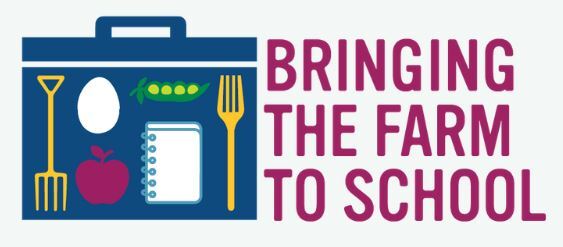
Getting local food products into school cafeterias can seem like a challenge for some farmers and agricultural producers, who may not think of schools as a market for their products. That is why the Bringing the Farm to School (BTFTS) training program is so valuable! This training seeks to expand market opportunities into schools for producers, while bridging the gap between producers, schools, and other child nutrition program operators, such as Child and Adult Care Food Program (CACFP) or Summer Food Service Program operators. Developed through a cooperative agreement between the USDA, the National Center for Appropriate Technology, and the National Farm to School Network, the BTFTS training program offers training and tools to support producers’ capacity to market and sell products to child nutrition program operators and perhaps most importantly, provides the necessary space for producers and schools to network and form relationships.
The USDA Food and Nutrition Service Mountain Plains Region has been actively engaged in planning and executing the BTFTS training program throughout the region. In early February, as part of Wyoming Food Coalition's Annual Conference, Farm to School Coordinator Bobby Lane of the Wyoming Department of Education (a Fiscal Year (FY) 2021 Patrick Leahy Farm to School Grantee) and USDA Farm to School Regional Specialist Andrea Alma convened a group of 20 individuals from around the state to participate in the training. This diverse group included sheep ranchers, Tribal food sovereignty advocates, cattle ranchers, and vegetable farmers. They learned the intricacies of school markets, including how to develop their products and package them for school market channels, which are both covered in the BTFTS’ Agricultural Producers’ Toolkit. Bobby emphasized that there is a lot of energy and enthusiasm around school markets in Wyoming, especially getting local foods into school cafeterias. “Wyoming is a big farm state, all agricultural folks have kids, or grand-kids, in Wyoming schools, and they want them to know where their food comes from and be proud of Wyoming-grown food.”
|
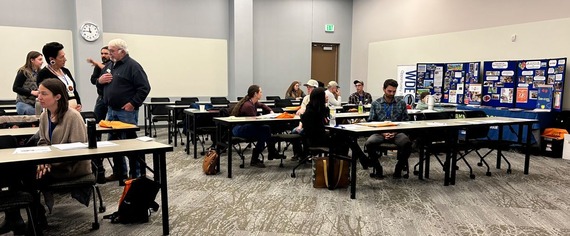 Bobby sees endless opportunities in his home state of Wyoming when it comes to producers and school districts working together on menu-planning, creating seasonality calendars, and educating students about the agricultural workforce. He sees the opportunities even beyond the lunch plate and hopes to incorporate farm visits for students, so they can understand how their food is grown and how food gets from the farm to the cafeteria. He plans to convene more trainings throughout the state and continue to be an important conduit between Wyoming producers and school districts.
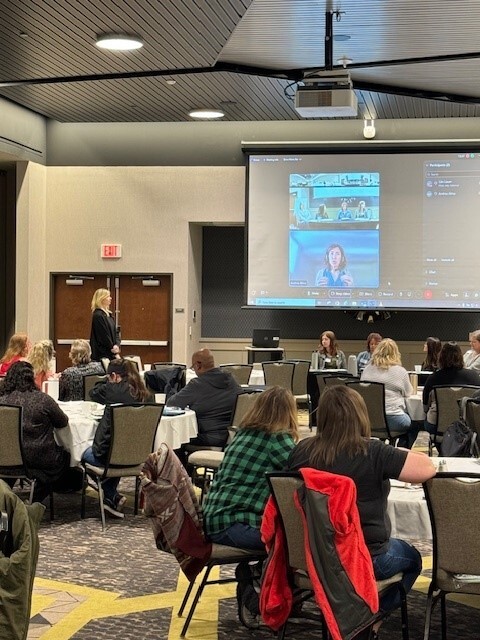
When asked about the benefits of these producer trainings, Lisa Lauer, Senior Nutritionist at DHSS shared that “Farmers and producers want to see Missouri students have access to and enjoy nutritious and local foods. They want to see their good food on trays and plates across the states, while having opportunities to expand into new markets. Schools are also seeing the benefit of working with local producers, simply by seeing the students enjoy fresh and delicious food-local tastes better!”
There has been a lot of movement and progress in the farm to school and CACFP space in Missouri, and even more so lately, there has been a growth of excitement around local purchasing. The trainings have fostered opportunities to initiate the development of long-lasting relationships between local producers, school districts, and the CACFP community to advance the goal of getting more local foods into Missouri schools and child nutrition programs.
We are thrilled to see the excitement and engagement in the Mountain Plains Region! These types of opportunities are continuing to demonstrate that farm to school and CACFP is a win-win for all involved: children are eating nutritious local foods, agricultural producers are expanding into new market opportunities, and money spent by child nutrition program operators is being invested into their local communities. If you are curious about the BTFTS training, click here to learn more about the training and how you can adapt and bring the training to your state!
|
|
|
 |
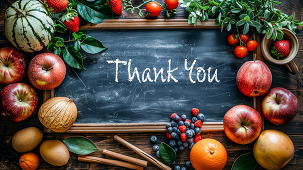
USDA Says Thank You to Farm to School Census Respondents
Every four years, USDA surveys more than 18,000 participating school food authorities (SFAs) through the Farm to School Census. This survey is conducted in all 50 states, territories, and the District of Columbia and represents the most comprehensive dataset of its kind. Responding to it requires the hard work of school food directors, State agency staff, and farm to school partners. For the 2023 Census, school teams provided information about how they incorporate local foods into their school meals, their agricultural and nutrition education activities, and how their edible school gardens invigorate campuses at all grade levels.
The data collection period has closed and USDA has begun preparing the data for publication in the 2023 Farm to School Census Report, which will be available this fall. The report will tell the story of how the use of local food products is progressing nationwide and will help schools, partners, advocates, producers, and policymakers understand how SFAs are doing their part to support vibrant local food systems and contributing to student experiences at school.
USDA wants to thank everyone who played a role in the Census! We look forward to sharing what we have learned this fall. Until then, stay tuned!
|
USDA Announces Grant Funding and Resources Available for Local and Regional Food Systems Development
The USDA Agricultural Marketing Service (AMS) recently announced the availability of approximately $26 million for the Local Agriculture Market Program (LAMP) to help local and regional food entities develop, coordinate, and expand producer-to-consumer marketing, local and regional food markets, and local food enterprises. A LAMP Stakeholder Toolkit is available to help organizations amplify funding available through the Fiscal Year 2024 LAMP. AMS invites applications by May 14,2024 under three programs:
-
Farmers Market Promotion Program supports producer-to-consumer markets such as farmers' markets, roadside stands, agritourism activities, community-supported agriculture programs, and online sales.
-
Local Food Promotion Program supports local and regional food business enterprises that engage as intermediaries in indirect producer-to-consumer marketing.
-
Regional Food Systems Partnerships supports public-private partnerships that build and strengthen viability and resilience of local or regional food economies.
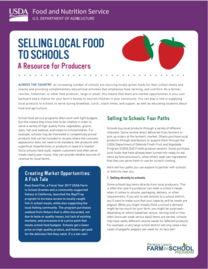
Selling Local Foods to Schools: A Resource for Producers Fact Sheet
An increasing number of schools are sourcing locally grown foods for their school meals and snacks. As a famer, rancher, fisher, or other food producer, this means there are market opportunities in your own backyard and an opportunity to feed children in your community. Learn more about selling local foods to schools by reading USDA’s Selling Local Foods to Schools fact sheet!
|
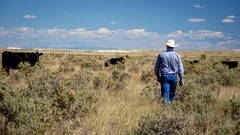
USDA Beginning Farmer Resources
Are you new to farming? USDA offers resources and grant funding opportunities to beginning farmers and ranchers. USDA can help you get started or grow your operation through a variety of programs and services, from farm loans to crop insurance, and conservation programs to disaster assistance. USDA supports and has resources for all beginning farmers including urban growers, LGBTQ+ farmers, young farmers, and women farmers. Additionally, you can sign-up for the Farmers.gov blog! The blog covers topics such as loans and grants, conservation efforts, and farm life.
|
National Agricultural Classification Survey
The USDA National Agricultural Statistics Service is conducting the National Agricultural Classification Survey (NACS), which started on January 24, 2024. The survey is an important step in determining who should receive a 2027 Census of Agriculture questionnaire. The survey will go to approximately 250,000 recipients to ask if they conduct agricultural activities. The results of the survey will ensure that every U.S. producer, no matter how large or small their operation, has a voice and is counted in the highly anticipated and influential agricultural census data. We encourage producers across the country to complete the brief survey!
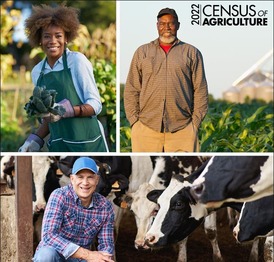
2022 Census of Agriculture
The USDA Census of Agriculture is a complete count of U.S. farms and ranches and the people who operate them. Even small plots of land - whether rural or urban - count if $1,000 or more of such products were raised and sold, or normally would have been sold, during the census year. The Census of Agriculture, taken only once every five years, looks at land use and ownership, operator characteristics, production practices, income, and expenditures. For America’s farmers and ranchers, the Census of Agriculture is their voice, their future, and their opportunity. Data from the 2022 Census of Agriculture is now available. All Census of Agriculture data can also be accessed using the National Agricultural Statistics Service’s searchable database, Quick Stats.
|
IRS Direct File Outreach Opportunities
Introducing the Internal Revenue Service (IRS) Direct File pilot: a new tax filing service that allows people to file their taxes for free, directly with the IRS. Individuals can use Direct File to file their taxes now, and the IRS needs your help getting the word out about this service. Please share this opportunity within your networks quickly, as filing season ends on April 15th. Available in both English and Spanish, this new service from the IRS is already saving people time and money. Direct File is currently being piloted in the following 12 states: Arizona, California, Florida, Massachusetts, New Hampshire, New York, Nevada, South Dakota, Tennessee, Texas, Washington, and Wyoming.
|
|


Colorado Local Food Program Guidebook
The Colorado Local Food Program Guidebook, provided by Nourish Colorado, is an online resource for school meal operators, agricultural producers, and school and community members. The Guidebook provides insights and tools for launching, implementing, and sustaining farm to school programs. It is full of custom-designed resources based off a decade plus of working side-by-side with School Meal Operators, listening to their needs, leading trainings to support their efforts, and now, turning that training content into tangible and digestible resources. While the website is designed for Colorado, many of the resources may be helpful to farm to school teams in other states, as well!
|
Transition to Organic Partnership Program

Healthy Meals Spring 2024 Summit
|

The USDA’s Agricultural Marketing Service and the National Association of State Departments of Agriculture (NASDA) Foundation designed a Good Agricultural Practices (GAP) grower toolkit and corresponding website to increase underserved farmers’ access to new and existing markets and USDA food safety certification programs. The GAP toolkit includes new, user-friendly educational resources with an emphasis on GroupGAP, a USDA farm food safety program that provides the specialty crops industry with opportunities to supply and buy fruits, vegetables and related products certified as being produced using GAP. The Toolkit explains GAP programs, the advantages of the programs, expected costs and fees, misconceptions, the audit process, and relevant resources.
|
|
|

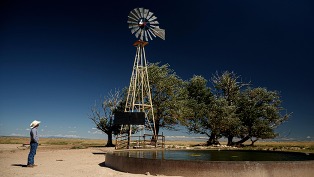
USDA Beginning Farmer and Rancher Development Program
|

Supporting the Use of Traditional Indigenous Foods in the Child Nutrition Programs Cooperative Agreement Request for Applications Deadline Extension!
The USDA’s Food and Nutrition Service (FNS) released a Request for Applications (RFA) for the Supporting the Use of Traditional Indigenous Foods in the Child Nutrition Programs Cooperative Agreement. The deadline for the request for applications has been extended until April 8, 2024. We encourage all who are interested to apply! Through this cooperative agreement, FNS will engage organizations led and primarily staffed by members of Federally Recognized Tribes and/or Native Hawaiians to provide regionally focused training and technical assistance to school nutrition professionals on procurement, preparation, and crediting of traditional Indigenous foods as part of the Child Nutrition Programs. The cooperators, with FNS guidance and approval, will also develop culturally relevant nutrition education materials for students to accompany the traditional Indigenous foods that are served, and the cooperators will train school nutrition professionals and other school staff on providing nutrition education to students.
|
Urban Agriculture and Innovative Production Competitive Grants Program
The USDA’s Urban Agriculture and Innovative Production (UAIP) grants program supports planning activities that initiate, develop, or support the efforts of farmers, gardeners, citizens, government officials, schools, members of tribal communities, and other stakeholders in areas where access to fresh foods are limited or unavailable. The program includes both implementation and innovation grants. Implementation grants fund activities that accelerate existing and emerging models of urban and/or innovative agricultural practices that serve multiple farmers or gardeners. Innovation grants may include new and emerging, as well as indigenous or non-traditional agricultural practices.
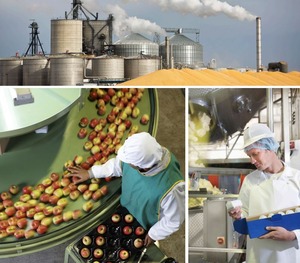
USDA Value-Added Producer Grants
The USDA’s Rural Development (RD) Value-Added Producer Grant (VAPG) program helps agricultural producers conduct value-added activities to generate new products, create and expand marketing opportunities, and increase producer income. For example, when a farmer takes raw agricultural products and turns them into a lightly processed product, like using peaches to make peach jam, that is a value-added product. Grant and matching funds can be used for planning activities or for working capital expenses related to producing and marketing a value-added agricultural product. Find your State-specific information here.
|
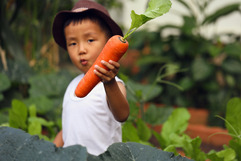
ASPHN’s FARMWISE: A Farm to CACFP Learning Collaborative Opportunity
Through a Fiscal Year 2024 cooperative agreement, the Association of State Public Health Nutritionists (ASPHN), partnering with the National Farm to School Network, National CACFP Sponsors Association, and the USDA will administer the first Farm to Child and Adult Care Food Program (CACFP) Institute and Learning Collaborative, called FARMWISE. Ten state coalitions will have the opportunity to explore state approaches to advance farm to CACFP to increase young children’s access to healthy environments and local foods. FARMWISE aims to expand state Farm to CACFP by enhancing capacity, program awareness, Farm to CACFP policies, systems, and environments, and collaborations. Register here for an informational webinars offered on April 3 at 1pm ET.
|
USDA School Food System Transformation Challenge Sub-Grants
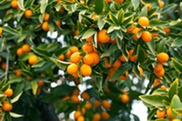
Specialty Crop Block Grant Program
Through the Specialty Crop Block Grant Program, USDA’s Agricultural Marketing Service (AMS), will issue noncompetitive grants to state departments of agriculture or equivalent in the 50 States, District of Columbia, the Commonwealth of Puerto Rico, Guam, American Samoa, the U.S. Virgin Islands, and the Commonwealth of the Northern Mariana Islands to fund projects that enhance the competitiveness of specialty crops and support specialty crop growers through marketing, education, and research. Specialty crops include fruits, vegetables, tree nuts, dried fruits, horticulture, and nursery crops, including floriculture. AMS encourages applications that serve smaller farms and ranches, new and beginning farmers and ranchers, underserved producers, veteran producers, and/or underserved communities. Interested applicants should apply directly through their state departments of agriculture.
|
|
|
|
USDA is an equal opportunity provider and employer. To file a complaint of discrimination, write: USDA, Office of the Assistant Secretary for Civil Rights, Office of Adjudication, 1400 Independence Ave., SW, Washington, DC 20250-9410 or call (866) 632-9992 (Toll-free Customer Service), (800) 877-8339 (Local or Federal relay), (866) 377-8642 (Relay voice users).
|
|
|
|
|